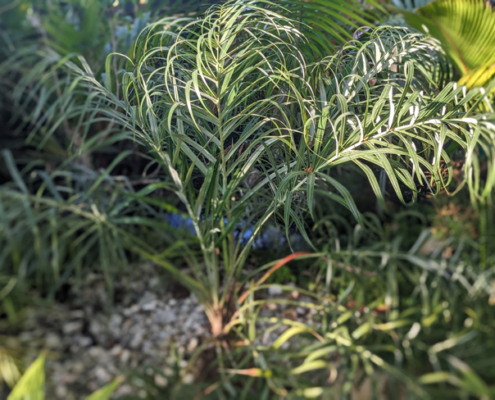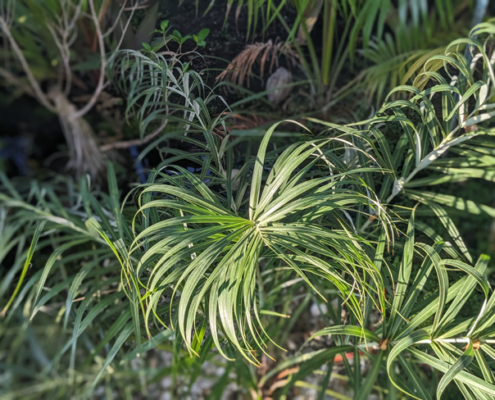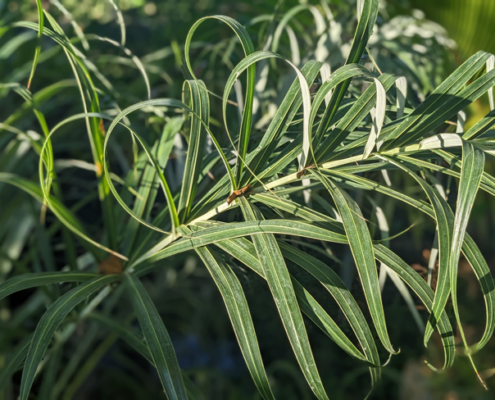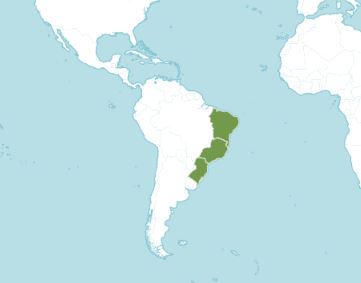Arecaceae
Plant Profile
Allagoptera arenaria
(ahl-lah-gohp-TEH-rah) (ahr-eh-nahr-EE-ah)
Subfamily Arecoideae
Tribe Cocoseae
Subtribe Attaleinae
“Allagoptera arenaria is popularly known as seashore palm, is a fruit tree endemic to the Atlantic Coast of Brazil. It grows in coastal strand, just above the high tide mark, and is widely cultivated as an ornamental throughout South America. The seashore palm is small in size, reaching about 6 feet (1.8 m) tall. The spiky flower stalks have both male and female flowers, so one plant can produce seeds by itself. The female flowers and the fruits that follow are borne in distinct spirals. The leaves of the seashore palm emerge right out of the ground from a subterranean trunk that is rarely visible, and grow in a swirling pattern, spreading out on different and seemingly random planes. There are 6–15 bright green to silvery green pinnately compound (feather-like) leaves 2–6 ft (0.61–1.8 m) long, with each leaflet about 2 ft (0.61 m) long. Its fruits are yellowish green and shaped like small coconuts, about 1 inch (25 mm) long and 0.5 in (13 mm) in diameter.” – Palmpedia
“Clumping palm with short prostrate or subterranean stems and graceful pinnate leaves, green above and silver below. Fruit arranged spirally on long stalk; cluster resembles pineapple. Excellent for beach-front. Prefers sandy soils.” – IFAS
“The native range of this species is Brazil (Sergipe to E. Paraná). It is a perennial and grows primarily in the seasonally dry tropical biome.” – Kew
Origin Map from Kew Royal Botanic Gardens





